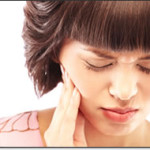 Despite recent press advocating Botox as the next cure for TMD/TMJ problems, my clinical experience using Botox over the last 5-10 years suggests that it represents another supportive treatment at best and may not live up to the hype over the long-term.
Despite recent press advocating Botox as the next cure for TMD/TMJ problems, my clinical experience using Botox over the last 5-10 years suggests that it represents another supportive treatment at best and may not live up to the hype over the long-term.
To start the discussion let’s focus on who is even a candidate for Botox, a chemical agent that can be used to partially reduce muscle contracture. Since most of the commonly seen TMJ problems are orthopedic in nature, patients typically experience muscle and joint pain, limited jaw motion, difficulty chewing and at times joint clicking, popping, and locking.
Those patients whose problem is mainly mechanical with clicks, pops, and locking are typically not good candidates for Botox injections.
If you look at the common muscle problems we encounter with TMJ, the vast majority of patients will get better with care consisting of:
- Education, behavior, and diet modification
- Postural awareness
- Home exercise
- Massage
- Short-term medication
And the more stubborn problems will get better by adding:
- Oral appliances
- Prescription for physical therapy
- Trigger point injections and/or acupuncture
That leaves only a small percentage of patients who would benefit from using Botox to alleviate some of the persistent jaw muscle pain resulting from the accumulation of lactic acid and other irritating substances.
These situations are likely the result of persistent negative emotions (stress), daytime overuse behaviors that fatigue the jaw and/or restless sleep associated with frequent arousals, and at times tooth clenching and grinding. Even if Botox were to be used in this select population of patients, success would only be achieved if the causes were controlled or eliminated. This is sometimes not an easy task!
It is also important to realize that Botox, if used in these difficult situations, will have to be repeated at least three times over the course of 9-12 months, which will be expensive. The Botox itself will cost $525 each time with an added fee of $400-650 for each injection session. However, if you are among the select few who are candidates, you have reason to be optimistic. The patients I have treated using Botox have experienced reduced suffering, though many are still clenching or grinding their teeth to the same degree, but feel less pain as a result.
The take home message is that Botox does have its place in the management of jaw muscle pain but is far from the “cure all” remedy it is made out to be by those trying to sell it as a remedy for TMJ problems.
Dr. Donald Tanenbaum is a specialist with offices in New York City and Long Island, NY. He is uniquely qualified to diagnose and treat facial pain associated with jaw problems, TMJ, referred pain, nerve pain, and migraines. Find out more at www.tanenbaumtmj.com.













